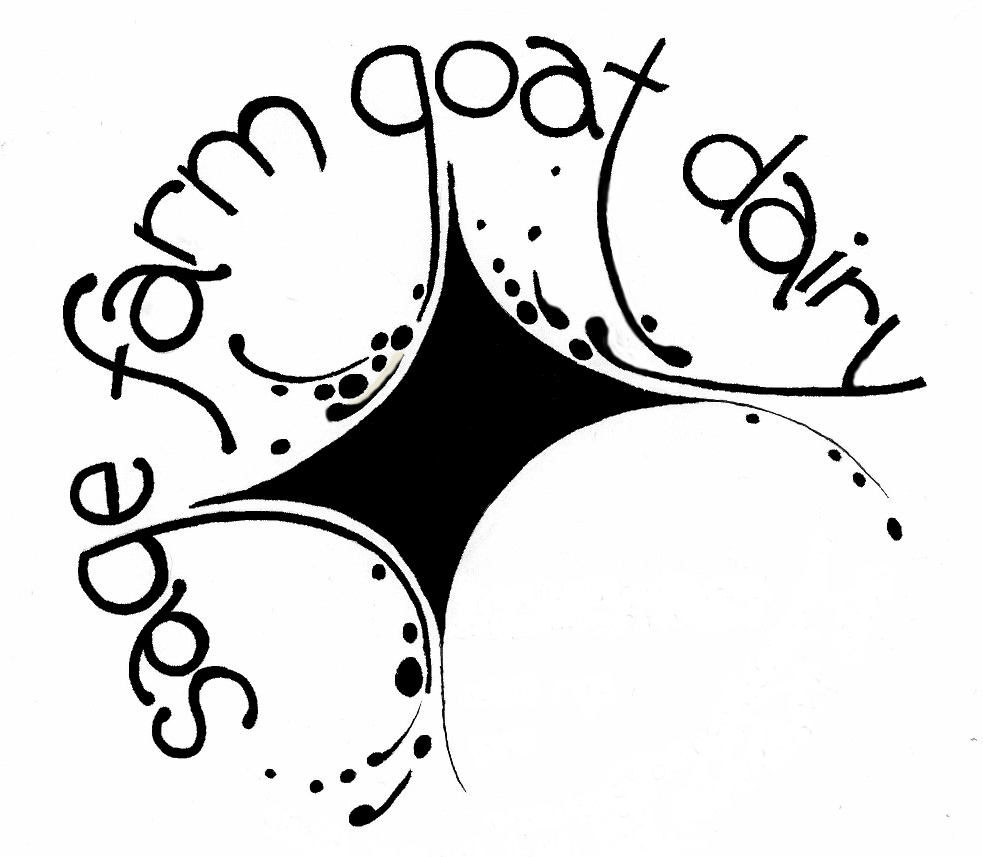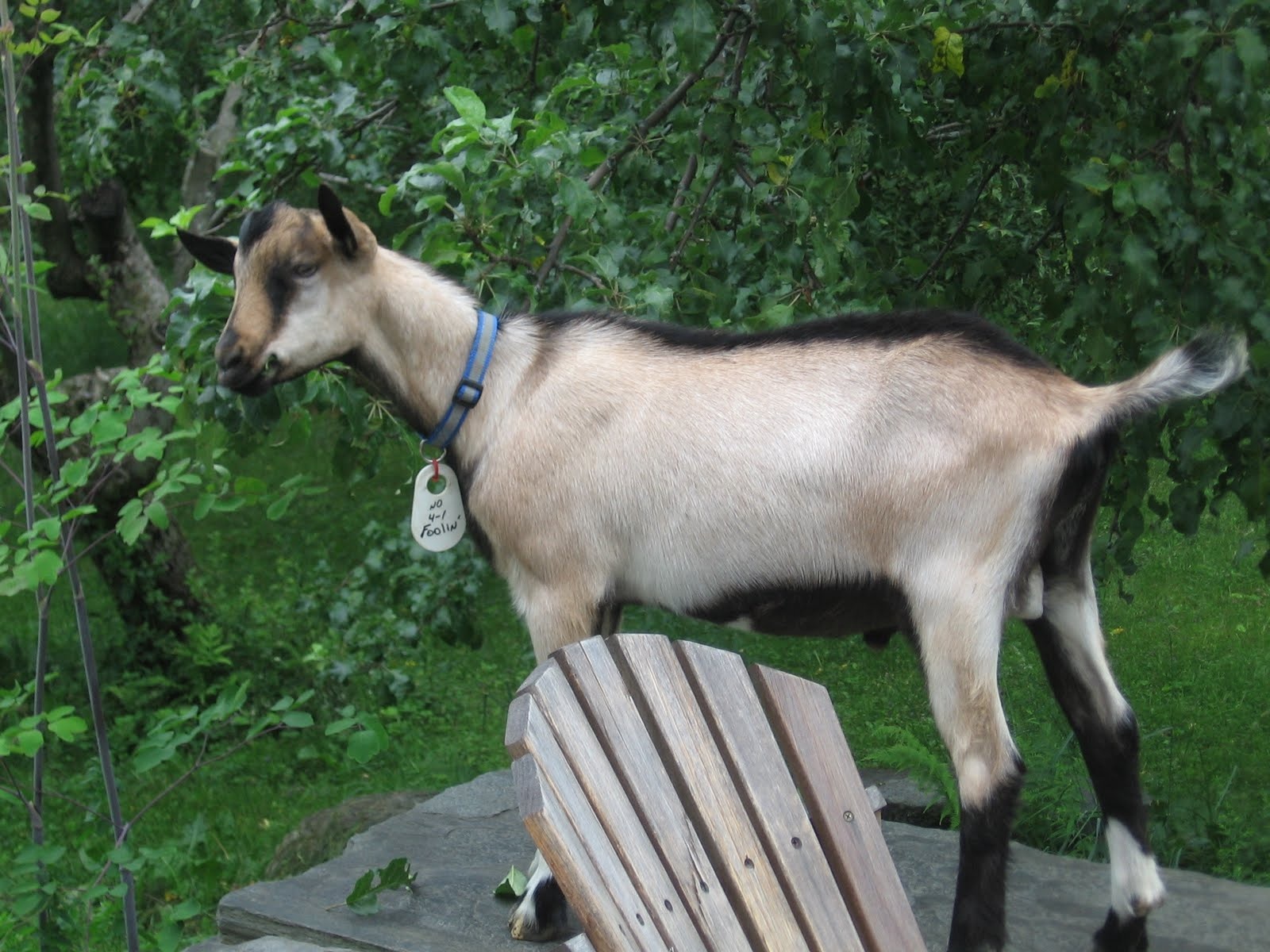Our Herd
Sage Farm Goat Dairy is an intentionally small dairy. We are committed to producing high quality products from high quality animals. We only milk around 20 does so we hold these does to a high standard. We manage for heavy milk production, but we do not push for production at the expense of our animals’ health. Through careful breeding and management we have developed a herd of highly productive dairy goats with good conformation. By 2018 we were regularly getting girls who could produce over 3000# in 275 days of milking. We have devloped a productive herd whose best members are now nearing 4000# in a season. Over the years our focus has shifted to maintaining excellent productivity with less grain and higher quality forage.
Genetics
In 2008 we purchased 6 Alpine doelings from Lazy Lady Farm in Vermont and an additional doe from Roeburn Farm in New Hampshire. We also bought 2 young bucks, one from Mamm-Key Alpines and one from Harmody Alpines, two Colorado farms with award-winning milking lines. We intentionally started our farm with a small number of animals from fantastic bloodlines, hoping that this initial investment would be a solid foundation from which our herd would grow. We have reaped the benefits of having conformationally sound, healthy, and high-producing animals. We are now milking around 20 goats. We keep our milkers in excellent health and retain only the most conformationally sound and productive does to keep up with the demand for our cheese.
We are committed to outcrossing as a breeding strategy. We are primarily concerned with increasing the fitness traits of our herd. We are ultimately looking for productive does that are hardy to our particular climate, which features cold winters and wet summers. This includes keeping does who appear to have some natural resistance to internal parasites and good feet. We are looking for animals whose udders and bodies hold up over time and who kid easily. While we do not have our herd appraised and do not show our animals, we do select for good mammary systems and graceful yet strong builds. We like to see width and depth of body, high rear udders and good teat shape and placement. In 2017 we participated in a study of alpha s1 casein, a protein in milk that can influence cheesemaking properties including yield. We now have an additional breeding goal of increasing the favorable alpha s1 casein genotypes for cheesemaking properties in our herd.
To accomplish our goals, we are committed to bringing in a buck with fresh genetics every 2-3 years from proven breeders in other parts of the country. We keep impeccable records on productivity, weighing milk every 3 weeks throughout the season. We track protein, fat, and somatic cell count. We keep FAMACHA scores and body condition scores for assessing anemia and worm load. Over the course of the season we use this quantitative data as well as qualitative health, behavior, and appearance judgements to help make culling decisions and plan breedings.
Herd Health Management
While we believe that genetics are important, the herd cannot achieve its full potential without quality care. We pay close attention to the health of each of our animals, following a strict nutrition plan and engaging in integrated parasite management. We regularly test for CAE, CL, and Johne’s and we have never had a positive test in our herd. Throughout the course of the milking season we send individual milk samples to be tested for somatic cell counts to make sure our girls are maintaining healthy udders. We keep a regular hoof trimming schedule to make sure our girls are in optimal condition for long days grazing. We vaccinate yearly for CDT and rabies with additional boosters for the kids. We are happy to say that we have had very few health problems in the fifteen years we have been keeping goats.
Nutrition
Raising healthy goats begins at birth. We attend every birth and allow the mother to lick her kids clean, which passes along vital microorganisms important to the kids’ developing immune systems. We do not allow the kids to nurse but bottle feed warm, unpasteurized colostrum at the rate of one ounce per pound of body weight within the first 1-2 hours of life. Our CAE-free and Johne’s-free status has allowed us to feed our kids raw milk, which we believe helps to bolster their immune systems. We continue to bottle feed as much colostrum as a kid will take for at least the first 12 hours and up to 24 hours. We then feed our kids raw goat's milk 3 times a day for at least 2 weeks. We continue feeding 100% goat’s milk from our herd until weaning at 8-10 weeks of age.
Kids get high quality hay as soon as they are interested and begin on organic grain at 6 weeks. They are introduced to pasture at about 3 months. We maintain a designated kid pasture which is broken down into smaller paddocks and grazed on a 45-day rotation. We have never needed to deworm any of our kids and we have excellent growth rates. We believe that keeping the kids away from the pastures where the older does graze is an important part of keeping them healthy.
To maintain high productivity throughout the milking season we try to keep our milkers happy and healthy. We gradually increase the protein and calcium level in their winter diet as they approach their due dates. By the time they freshen (kid), they are eating a daily ration of organic grain and have free access to good quality hay.
We begin the grazing season in May. We offer a fresh paddock every day and rotate through scrubby browse areas in mid-summer. We are lucky to have shade trees sprinkled throughout our pastures; this helps to helps the herd cool while they graze through the summer heat. In 2015 we hired a nutritionist to help create a balanced grain ration that reflects the changes in the pasture plants and hay over the course of the year. After evening milking the milkers stay in the barn overnight with free access to hay. By early December our grazing season is over, but we continue to take the girls for walks so they can munch on low-hanging spruce and apple branches around the farm. With newly installed fixed fencing in the barnyard pasture in 2018, we can now let the herd out for plenty of exercise throughout the winter months.
Integrated Parasite Management
We have adopted various strategies to manage Haemonchus contortus, the barber pole worm, otherwise known as the grazing goat's nemesis. We graze our goats on small paddocks with movable electric fence. We make sure the goats don't graze the same area for at least 45 days. We use the FAMACHA method for assessing anemia over the course of the season and selectively deworm with conventional anthelmintics when absolutely necessary. In 2013 we began administering copper boluses during the height of the parasite season as an additional means of discouraging stomach parasites.





